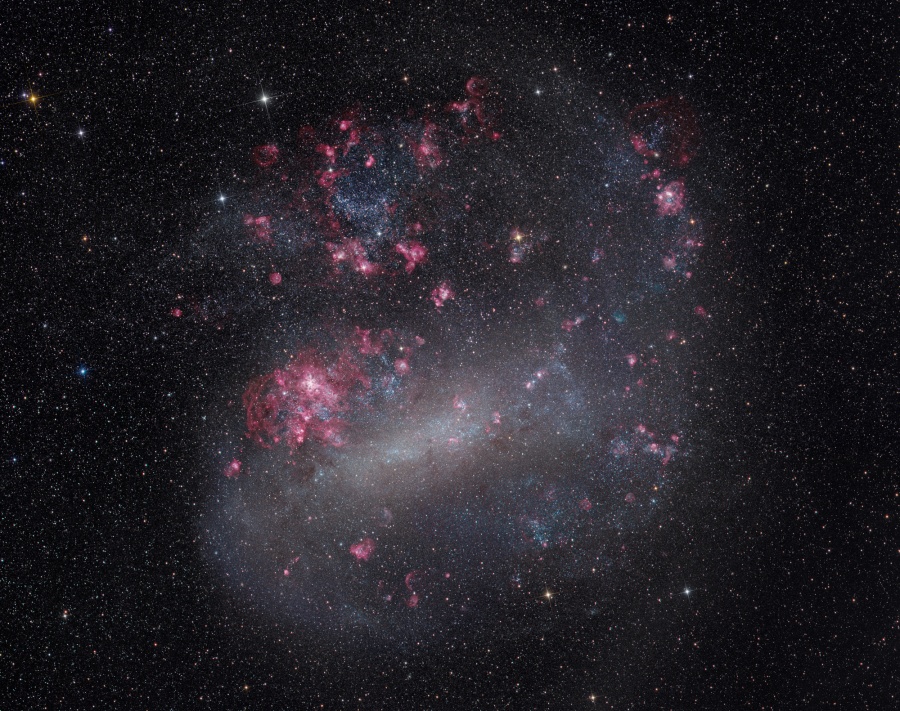As I'm preparing a little
presentation of "EXTRAGALACTIC OBJECTS IN ANDROMEDA AND TRIANGULUM
GALAXIES" to our annual Deep Sky Meeting, I thought to myself, why not
dump some of that stuff in it here? As the goodies in Andromeda and Triangulum
galaxies have already been discussed in the Blog, here are some of the
fancy objects included in the intro of the presentation.
 |
| Artist's impression of SagDEG Image courtesy of NASA |
 |
| Large Magellanic Cloud Credit & Copyright: Marco Lorenzi |
After these two (or four, you little cheater...) it becomes a bit trickier. In the Andromeda-piece the extragalactic globular clusters in Fornax Dwarf (Spheroidal) where mentioned. Of the bunch the brightest one is NGC 1049 @ 12.6 (v) magnitude so it can be spotted even with small apertures. Despite the bright globular clusters, the brightest single stars in Fornax Dwarf are only around 19th magnitude! The hunt for individual stars becomes easier with NGC 6822 (Barnard's galaxy). The brightest stars shine around 15th magnitude so resolving the galaxy should be fairly easy but identifying a star that actually is part of NGC 6822 and seeing it (not just a bunch of resolved stars) is going to be annoying. Oh, and don't forget to bag the brightest H II region in NGC 6822: IC 1308 which shines at around 14th magnitude. Don't get freaked out by the larger aperture sightings of it by Jakiel, Gottlieb, Polakis[3]. IC 1308 is quite visible even with medium apertures.
For globular cluster hunters, here's
a list of brightest extragalactic globular clusters.
Host galaxy
|
Name
|
Mag (v)
|
Fornax Dwarf
|
NGC 1049
|
12.6
|
Andromeda galaxy
|
G1
|
13.7
|
NGC 205 (M 110)
|
G73
|
14.9
|
WLM
|
WLM 1
|
15.7
|
Triangulum galaxy
|
C39
|
15.9
|
NGC 147
|
Hodge 3
|
16.5
|
NGC 185
|
Hodge 5
|
16.6
|
NGC 2403
|
F46
|
17.5
|
Messier 81
|
[PR95] 50225
|
18.4
|
References
[1] Stephen O'Meara. Deep-Sky Companions: The Caldwell Objects: page 406.
[2] Visual magnitude estimate by Timo Karhula.
[3] http://www.astronomy-mall.com/Adventures.In.Deep.Space/barnard.htm
